
As house prices continue to rise, many Canadians find it more challenging to save for a mortgage down payment. In the 2022 federal budget, the Canadian government has proposed initiatives to make homeownership more affordable. One way the government aims to tackle the housing crisis is through the First Home Savings Account (FHSA).
The FHSA has many similarities to two existing registered accounts, the tax-free savings account (TFSA) and the registered retirement savings plan (RRSP). Here is updated information about the First Home Savings Account (FHSA) and what you should know about it.
What is the First Home Savings Account (FHSA)?
The first home savings account is a tax-free savings account for the sole purpose of buying a home. The FHSA is operational since April 2023 and is targeted at Canadian residents who plan to purchase their first home. There are conditions on who can use it and how.
When you contribute to your FHSA, you can invest your money in allowable investment assets like stocks, bonds, mutual funds, exchange-traded funds (ETFs), and guaranteed investment certificates (GICs). You can get these through online brokers. The CRA will not tax investment income from your FHSA when you make withdrawals. It is a tax-free account.
Suppose you contribute $5,000 to your FHSA and invest in stocks. If the value of your stocks increases to $10,000, you will make a capital gain of $5,000. This extra income is not subject to tax. The income is safe from the CRA. In addition to having a tax-free savings account, if you contribute to the FHSA, you can claim tax deductions when you file your income tax return, thereby reducing your taxes.
Where to open your first FHSA?
Effective April 2023, some institutions have been quicker than others to allow you to open your account. More banks and Desjardins will offer the FHSA by the end of 2023. If you're not in a hurry, you can wait to see all the offers.
Questrade
Questrade, a well-known online broker for investors who like to save on fees, was the first to offer the FHSA. You can open an account to accumulate your down payment in cash or in various types of investments such as exchange traded funds (ETFs) and stocks through your Questrade self-directed account or in portfolios prepared by Questwealth Portfolios.
RBC
Royal Bank also recently launched the TFSA. To open your account, you can make an appointment, log in to an RBC Direct Investing brokerage account or choose a portfolio with the RBC InvestEase. With this robo-advisor, you can only invest in ETFs, but with RBC Direct Investing, you have access to stocks, options and bonds in addition to ETFs.
National Bank
National Bank wanted to offer the FHSA quickly. In a few months, you should be able to choose several types of investments for your account. For now, however, you can only choose between a GIC and a regular savings account. You must make an appointment using their online form to open your account. By making an appointment, you also enter a contest for $8,000!
Epargne Placements Quebec
The Epargne Placements Quebec (EPC) FHSA is available to Canadian residents living in Quebec. This account allows you to choose products with attractive interest rates while paying no management or administration fees. In addition, your investments are fully guaranteed by the provincial government. To contribute, you must make an electronic transfer or use your Flexi-Plus EPC account. For the time being, withdrawals from this FHSA are not possible.
Financial institutions that will offer the FHSA by the end of 2023
Here is a list of the banks that have announced that you will be able to open a FHSA by the end of 2023. Desjardins is offering a pre-FHSA, which is a high intesrest rate account where you can put your money until you can officially open your FHSA. Some banks also have a waiting list so you don't miss their opening date.
| Name of institution | Date | Special offer |
| BMO | By the end of 2023 | No |
| Desjardins | Summer of 2023 | pre-FHSA |
| TD | Summer of 2023 | No |
| Scotia | By the end of 2023 | No |
| CIBC | By the end of 2023 | No |
| Wealthsimple | By the end of 2023 | Waiting list |
| EQ Bank | Unspecified | Waiting list |
| Laurentian Bank | Unspecified | No |
What is the FHSA contribution limit?
Through the FHSA, you can save $8,000 annually beginning in 2023. Why only $8,000? The FHSA comes with an annual limit of $8,000 and a lifetime limit of $40,000.
There is a significant difference between the FHSA and the tax-free savings account (TFSA). Your unused contribution room to your TFSA accumulates and can be carried forward. This is not the case for the first home savings account (FHSA). You can carry forward one year of unused TFSA contribution. For example, if you open an account in 2023 but don't contribute to it, you can carry forward your 2023 contribution room into 2024, but you won't be able to do so in 2025.
For example, if you contribute only $6,000 to your FHSA in 2023, and make not contribution in 2024, you would forfeit the $2,000 unused contribution. Typically, if you contribute your annual contribution limit of $8,000 every year starting from the year you are eligible to open and contribute to an FHSA, you will reach your lifetime limit of $40,000 within five years.
Who can open a FHSA?
If you are planning to buy your first home, you may be able to use the first home savings account. However, you need to check that you are eligible to open and use the FHSA for your home buying goal. There are eligiblity requirements.
What are the eligibility requirements to open an FHSA?
First, you must be a resident of Canada between the ages of 18 and 71 years old. Also, you must not have resided in a home you or your partner own at any time in the year you open your FHSA or during the past four calendar years. Essentially, the Canadian government wants the proposed FHSA to benefit only first-time primary homeowners.
Withdrawing from the First Home Savings Account (FHSA)
If you withdraw money from your FHSA to purchase your first home, you will not pay taxes on your withdrawals. However, if you use money from your FHSA for other purposes other than a first-home purchase, the CRA will recognize your withdrawal amount as income and tax it.
The lifespan of the FHSA is limited. The first home savings account can only be open for 15 years. If you open and contribute to your FHSA but do not use it to purchase a qualifying first home after 15 years from when you opened it, you would need to close your account.
You can withdraw a lump sum amount from your first home savings account and pay taxes on the withdrawal. Another option to avoid any immediate taxation. To do this, you convert your FHSA to a registered retirement savings plan (RRSP) before the end of the year you turn 71. Alternatively, you can transfer the funds in your FHSA through your FHSA provider to a registered retirement income fund (RRIF). It is important to note that the RRIF is intended to provide periodic income in retirement. If you convert your FHSA to a RRIF, you would need to start withdrawing the minimum amount in the following year.
Contribution room consequences
Plus, when you transfer from your TFSA to an RRSP, it doesn't reduce your RRSP contribution room! Even if you don't have RRSP contribution room, you can still make a qualifying direct transfer from your TFSA to your RRSP. This is a very strategic move.
However, when you make a withdrawal from your First Home Savings Account or a transfer to your RRSP or RRIF, it does not increase your TFSA contribution room. For example, if you contribute up to the $8,000 annual limit to your TFSA in 2023, but decide to transfer $5,000 to your RRSP, this does not free up any additional contribution room for your TFSA in 2023. You will have to wait until 2024 to reach your total annual contribution limit of $8,000. Similarly, you can transfer funds from your RRSP to your TFSA tax-free if you have TFSA contribution room, but your transfer will not restore your RRSP contribution room.
The FHSA vs The Home Buyer’s Plan (HBP)
The TFSA is different from the Home Buyers' Plan (HBP). With the Home Buyers' Plan, you can borrow up to $35,000 from your RRSP to buy your first home. You to not have to pay taxes on this withdrawal. When you withdraw from your RRSP under the Home Buyers' Plan, you must repay the amount borrowed within 15 years. However, when you withdraw from the TFSA, you do not have to repay the amount withdrawn. You can combine the HBP and TFSA.
How does the TFSA-APP compare to a TFSA and an RRSP?
| FHSA | TFSA | RRSP | |
| Purpose | First-time home purchase | General savings | Retirement savings |
| Eligibility | A Canadian resident between the ages of 18 and 71 years old. Not lived in a home you own at any time in the year you open your FHSA or during the past four calendar years | At least 18 years old. Canadian resident | Have earned income. Canadian resident |
| Contribution tax treatment | Contributions are tax-deductible. Investment income and capital gains are tax-free when used to purchase a qualifying first-time home | Contributions are not tax-deductible. Investment income and capital gains are tax-free | Contributions are tax-deductible. Contributions and investment income are taxed when withdrawn |
| Contribution Limit | $8,000 annual limit. $40,000 lifetime limit. Unused contribution room is carried forward for 1 year only. | $6,500 annual limit in 2023. Unused contribution room is accumulated and carried forward | $30,780 annual RRSP limit in 2023. Contribution room is calculated based on your unused contribution room, previous year’s net income, the RRSP annual limit, and other pension adjustments |
| Withdrawals | You can withdraw money from your FHSA for other purposes, but such withdrawals will be taxed. Withdrawals for first-home purchase is not taxed. You can make qualifying direct transfers to an RRSP or RRIF without being subject to tax.Subsequent withdrawals from RRSP or RRIF are taxed | You can withdraw money from a TFSA for any purpose without being subject to tax. No limitations on withdrawals | Withdrawals from RRSP are taxed. You can convert your RRSP to a RRIF or annuity without being subject to tax. Subsequent withdrawals from RRIF or annuity are taxed |
| Timeline | Can only stay open for 15 years from when you open the account. Withdraw funds or convert to RRSP or RRIF when closed. | Can remain open for life | Can remain open until December 31st in the year you become 71. Withdraw funds or convert to annuity or RRIF when closed |
Conclusion
The FHSA is a good thing for Canadians looking to buy their first home. You can use this account to save for your down payment. With a FHSA, you get the tax benefits of both a TFSA and an RRSP in one account. You can claim tax deductions for your contributions, and withdrawals for home purchases are tax-free. The FHSA does not replace the existing Home Buyers' Plan (HBP). Rather, it provides Canadians with another tax-efficient savings opportunity.
Frequently asked questions about the FHSA
Yes, you can open more than one first home savings account, but you cannot exceed the annual and lifetime contribution limits across all your accounts.
No, the FHSA does not replace the home buyer’s plan. The HBP will still be available to Canadians looking to purchase their first home. You can use both to buy your first home.


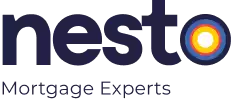
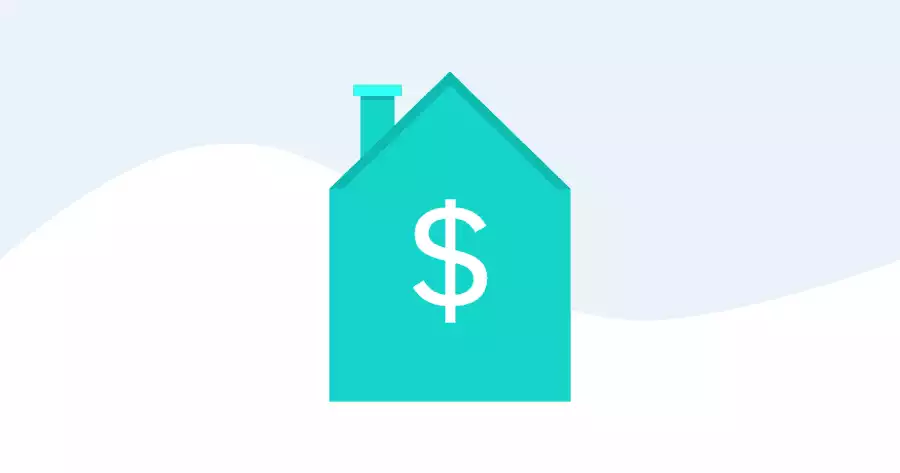

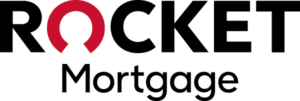
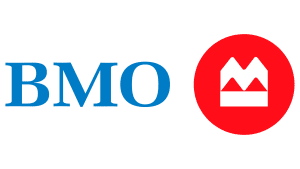







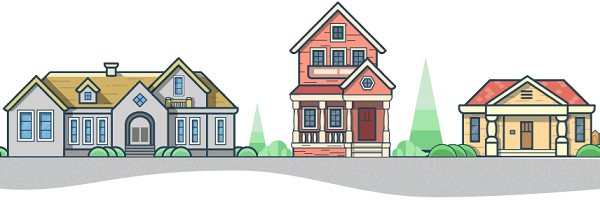







About The Author: Maude Gauthier
Passionnée par la finance, l'entrepreneuriat et l'immobilier, Maude a exploré ces trois thèmes dans des centaines de billets de blogue. Avant de se lancer dans l'écriture et le marketing en 2018, elle a travaillé dans la recherche universitaire pendant plusieurs années. Diplômée, rediplômée et surdiplômée ne soyez pas surpris de croiser un cours ou une conférence en ligne. Variété et diversité sont ses mots d'ordre !
More posts by Maude Gauthier